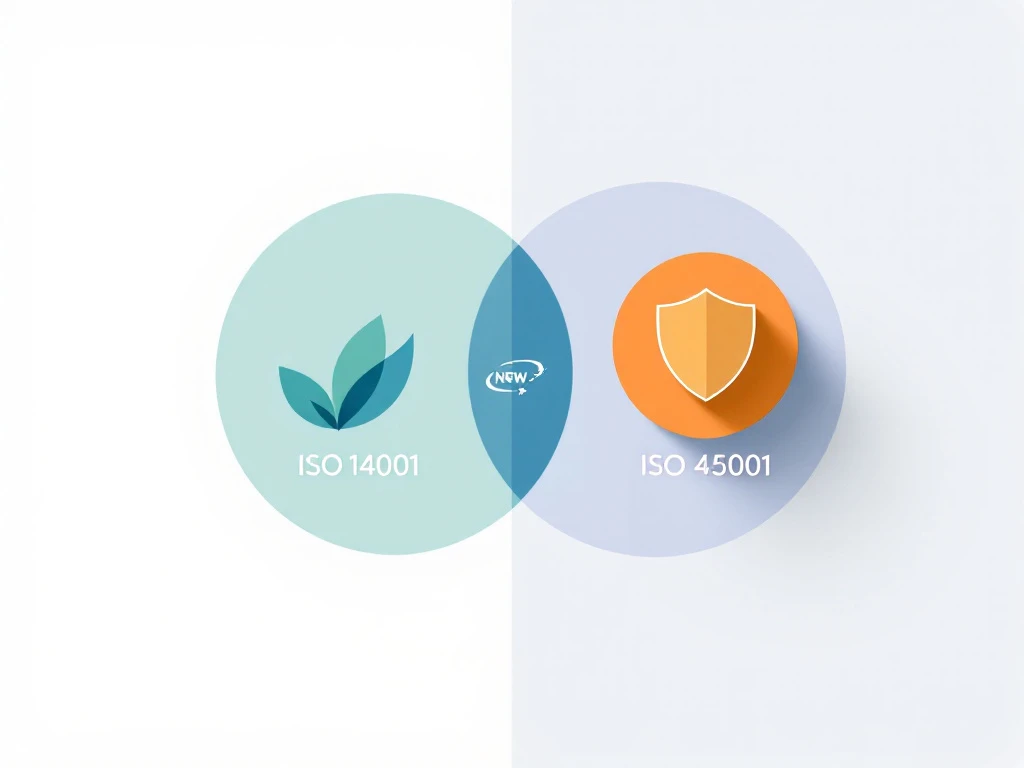
Andres Fellenberg Van der Molen
Director at Green Partner Europe | Hotels Specialist | Sustainability | Energy Efficiency | Circular Economy | Zero Waste | CSR | ESG | SDG

What is the difference between ISO 14001 and ISO 45001?
These two prominent ISO management systems serve distinct yet complementary purposes in modern organizations. ISO 14001 establishes criteria for environmental management systems, helping businesses minimize their ecological footprint through systematic approaches to sustainability. In contrast, ISO 45001 focuses on occupational health and safety management, creating frameworks that protect workers and create safer workplace environments. While their focus areas differ, both standards follow similar structured approaches to implementation and continuous improvement.
What is the difference between ISO 14001 and ISO 45001?
| Feature | ISO 14001 | ISO 45001 |
|---|---|---|
| Core Focus | Environmental Management Systems (EMS) | Occupational Health and Safety Management Systems (OHSMS) |
| Primary Concern | Environmental aspects and impacts | Workplace hazards and safety risks |
| Key Objectives | Pollution prevention, resource conservation, waste management, environmental compliance | Creating safer workplaces, reducing incidents, enhancing employee health and safety |
Though different in focus, both standards share a foundation in the ISO’s High-Level Structure (HLS), making them compatible for organizations seeking integrated management systems.
What does ISO 14001 specifically cover?
ISO 14001 establishes a comprehensive framework for environmental management within organizations. The standard requires businesses to:
- Identify all environmental aspects of their operations
- Understand their environmental impacts
- Establish objectives for improvement
- Develop procedures for managing waste, conserving resources, and preventing pollution
- Ensure legal compliance with environmental regulations
The standard employs a Plan-Do-Check-Act methodology for continuous improvement and requires organizations to conduct regular internal audits and management reviews. Learn more about ISO 14001 certification and how it enables organizations to minimize their environmental impact through sustainable practices while enhancing their brand reputation as environmentally responsible enterprises.
What are the main components of ISO 45001?
ISO 45001 consists of several essential elements designed to create comprehensive workplace safety systems:
- Hazard identification and risk assessment processes that proactively identify potential dangers
- Worker consultation and participation, recognizing employee insights into safety concerns
- Legal compliance with applicable safety regulations
- Emergency preparedness and response protocols
- Performance evaluation methods, including monitoring, measurement, and analysis
- Management reviews ensuring ongoing commitment to safety objectives
How do the implementation processes differ between ISO 14001 and ISO 45001?
| Implementation Aspect | ISO 14001 Approach | ISO 45001 Approach |
|---|---|---|
| Primary Focus | Environmental aspects identification and baseline environmental performance | Hazard identification, risk assessment, and worker participation |
| Documentation Requirements | Environmental aspects and impacts | Hazards, risks, and control measures |
| Leadership Roles | Leadership commitment required | More explicit definition of roles and responsibilities throughout organization |
Both standards share similar implementation structures due to their High-Level Structure foundation.
Can a company integrate ISO 14001 and ISO 45001 systems?
Yes, organizations can effectively integrate these management systems thanks to their shared High-Level Structure (HLS).
Benefits of integration include:
- Reduced documentation
- More efficient resource allocation
- Streamlined auditing processes
- Consistent management approaches
Potential integration challenges:
- Balancing resources between environmental and safety priorities
- Ensuring adequate expertise in both domains
We recommend a phased integration approach, starting with harmonizing policies and objectives, then systematically integrating operational procedures and documentation.
What are the business benefits of implementing ISO 14001 vs ISO 45001?
| Benefit Type | ISO 14001 Benefits | ISO 45001 Benefits |
|---|---|---|
| Tangible Benefits |
|
|
| Intangible Benefits |
|
|
Both standards contribute to overall organizational resilience and sustainability.
How do the audit and certification processes compare?
Both standards follow similar certification pathways:
- Initial documentation review
- On-site audit
- Certification decision
- Ongoing surveillance audits
The certification cycle typically spans three years with surveillance audits conducted at 12-month intervals. Recertification occurs at the end of each three-year cycle.
Key differences in audit focus:
- ISO 14001 audits: Concentrate on environmental aspects, impacts, and performance
- ISO 45001 audits: Emphasize hazard identification, risk assessment, and worker participation
Organizations seeking dual certification can sometimes combine audit activities to improve efficiency and reduce disruption.
ISO 14001 and ISO 45001: Which should your organization implement first?
The decision depends on several factors including your industry type, organizational needs, regulatory environment, and available resources.
Factors to consider when prioritizing implementation:
- Industry type: Manufacturing and industrial companies with significant environmental impacts might prioritize ISO 14001
- Risk profile: Organizations with high-risk operations or safety incidents would benefit from implementing ISO 45001 first
- Existing systems: Assess your current management systems and build on existing strengths
- Regulatory pressures: Consider which standard addresses your most pressing compliance requirements
- Stakeholder expectations: Determine which standard aligns with your stakeholders’ primary concerns
Many companies begin with the standard most aligned with their immediate business needs or regulatory requirements, then expand to the other standard once the first is well-established.
